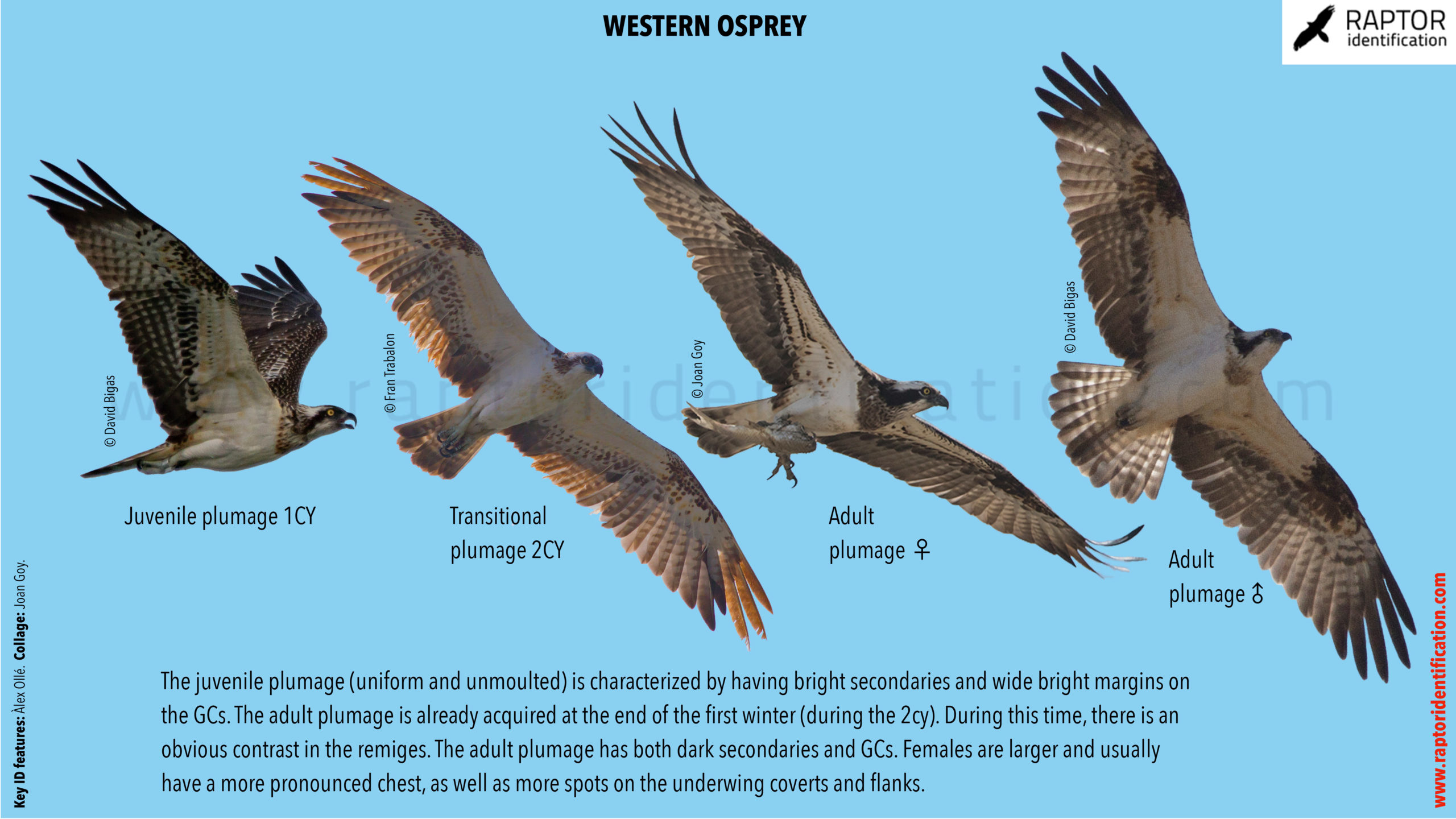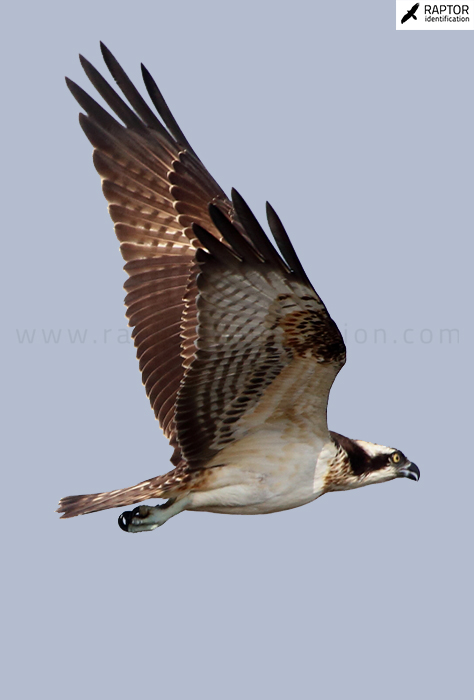Taxonomy:
· haliaetus (Eurasia to Japan; Cape Verde islands, Canary islands, Mediterranean Sea, Red Sea, Persian Sea, Himalayas, SE of China and Taiwan)
· carolinensis (North America and gulf of California in Mexico)
· ridgwayi (Bahamas, Cuban Keys, Yucatan and Belice)
· cristatus (Célebes and Java to the east of Solomon Islands and New Caledonia, and along the south coast of Australia). This subespecies is considered its own species by some authors and includes melvillensis and microhaliaetus
Status:
The population of northern and central Europe is migrant, wintering basically in sub-Saharan Africa. Immature birds spend their 2cy in Africa and do not return to Europe until the spring of 3cy, with the first adult plumage. The southern population distributes around the Mediterranean Sea. The birds of the Canary Islands, Red Sea and the Arabian Peninsula are residents.
Moult:
Juvenile birds starts moulting the flight feathers in November-January (1W), ending in late autumn or early second winter. Adults moult throughout the year, except for migratory periods and part of the breeding season.
Sexing:
The ♀ are more corpulent and mottled, have longer wings and the head is proportionally smaller in relation to the body.
The ♂, are more slender, neater and compact.
Similar species:
European Honey Buzzard, Booted Eagle (white morph) and Bonelli’s Eagle.

